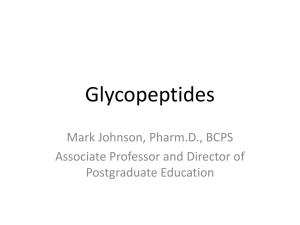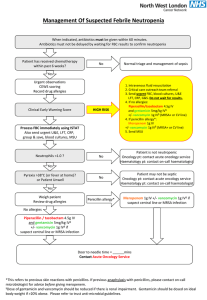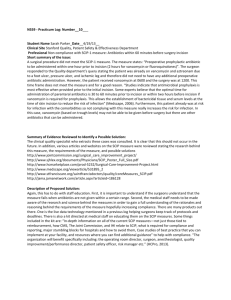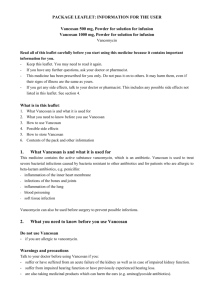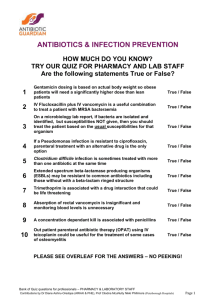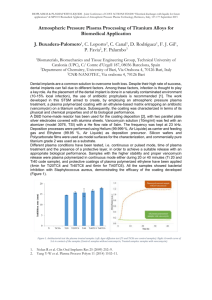Vancomycin Mylan powder for concentrate for solution for infusion
advertisement
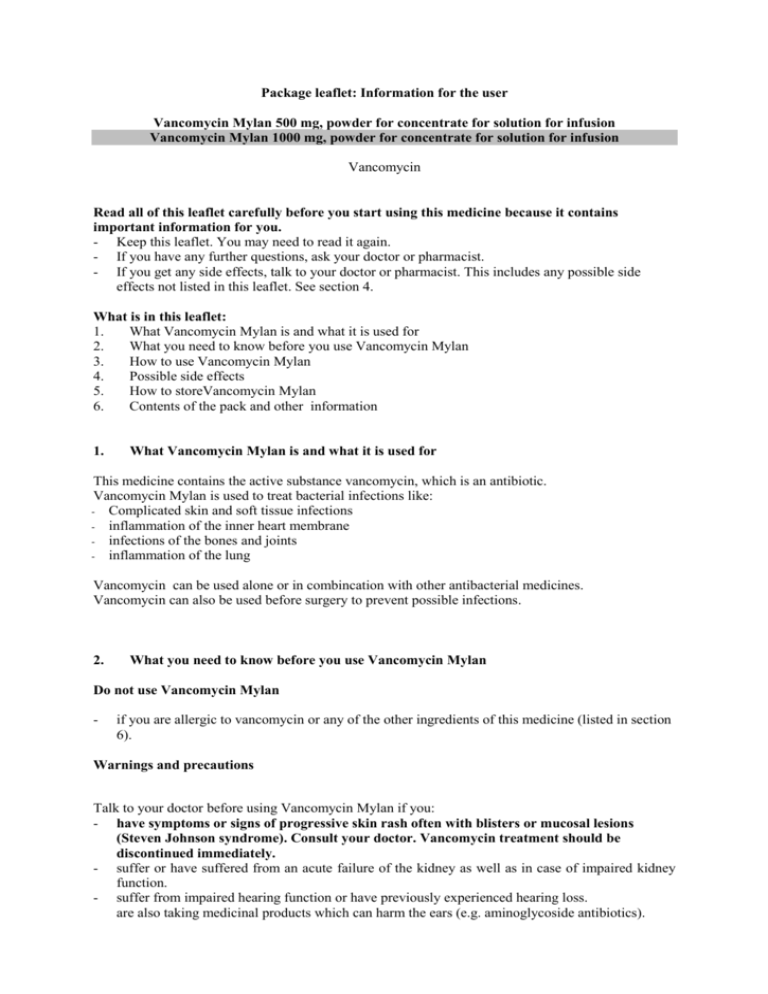
Package leaflet: Information for the user Vancomycin Mylan 500 mg, powder for concentrate for solution for infusion Vancomycin Mylan 1000 mg, powder for concentrate for solution for infusion Vancomycin Read all of this leaflet carefully before you start using this medicine because it contains important information for you. - Keep this leaflet. You may need to read it again. - If you have any further questions, ask your doctor or pharmacist. - If you get any side effects, talk to your doctor or pharmacist. This includes any possible side effects not listed in this leaflet. See section 4. What is in this leaflet: 1. What Vancomycin Mylan is and what it is used for 2. What you need to know before you use Vancomycin Mylan 3. How to use Vancomycin Mylan 4. Possible side effects 5. How to storeVancomycin Mylan 6. Contents of the pack and other information 1. What Vancomycin Mylan is and what it is used for This medicine contains the active substance vancomycin, which is an antibiotic. Vancomycin Mylan is used to treat bacterial infections like: - Complicated skin and soft tissue infections - inflammation of the inner heart membrane - infections of the bones and joints - inflammation of the lung Vancomycin can be used alone or in combincation with other antibacterial medicines. Vancomycin can also be used before surgery to prevent possible infections. 2. What you need to know before you use Vancomycin Mylan Do not use Vancomycin Mylan - if you are allergic to vancomycin or any of the other ingredients of this medicine (listed in section 6). Warnings and precautions Talk to your doctor before using Vancomycin Mylan if you: - have symptoms or signs of progressive skin rash often with blisters or mucosal lesions (Steven Johnson syndrome). Consult your doctor. Vancomycin treatment should be discontinued immediately. - suffer or have suffered from an acute failure of the kidney as well as in case of impaired kidney function. - suffer from impaired hearing function or have previously experienced hearing loss. are also taking medicinal products which can harm the ears (e.g. aminoglycoside antibiotics). - have previously had an allergic reaction to the medicinal substance teicoplanin, since then there is an increased risk of being allergic to Vancomycin Mylan as well. Allergic reactions can be lifethreatening. suffer from severe persistent diarrhoea during or after treatment with Vancomycin Mylan. In this case contact your doctor immediately. Do not take any anti-diarrhoeic medicine without consulting your doctor. Other medicines and Vancomycin Mylan Tell your doctor or pharmacist if you are taking or have recently taken or might take any other medicines. Medicines potentially harmful to the kidneys (e. g. aminoglycoside antibiotics, iodine contrast agents, platinum-based chemotherapy agents, methotrexate at high doses, and some antiviral drugs such as pentamidine, foscarnet, aciclovir, ganciclovir, famciclovir, valaciclovir, valganciclovir, ciclosporin or tacrolimus). If given at the same time as vancomycin, this harmful effect can be increased. In such cases, a careful and regular control of the kidney function is necessary. Medicines potentially harmful to hearing (e. g. aminoglycosides, platinum-based chemotherapy agents and some diuretics). If given at the same time as vancomycin, this harmful effect can be increased. In such cases, a careful and regular control of the hearing function is necessary. Anaesthetics: The use of anaesthetics increases the risk of getting certain side effects of vancomycin like drop of blood pressure, redness of the skin, nettle rash, decreased heart function and itching. Muscle relaxants (e.g. succinylcholine). If given at the same time as vancomycin, the effect of the muscle relaxant can be intensified or prolonged. Medicine that prevents clotting of the blood (e. g. warfarin). If given at the same time as vancomycin, the effect of warfarin can be increased Pregnancy and breast-feeding If you are pregnant or breast-feeding, think you may be pregnant or are planning to have a baby, ask your doctor or pharmacist for advice before taking this medicine. Pregnancy If you are pregnant, your doctor should only give you vancomycin if clearly necessary and after careful consideration of benefits and risks. Vancomycin may affect the foetus ears and kidneys. Breast feeding Vancomycin passes into breast milk and may affect the baby. Your doctor should only give you vancomycin if clearly necessary and after careful consideration of benefits and risks. If you are given vancomycin you should stop breastfeeding. Driving and using machines Vancomycin Mylan has no or negligible influence on the ability to drive and use machines. 3. How to use Vancomycin Mylan Administration: Vancomycin Mylan is always administered by healthcare personnel. It will be given as an infusion (into a vein). Your doctor will inform you about the necessary duration and frequency of administration of Vancomycin Mylan. Dosage: Patients with normal kidney function, adults and children from 12 years The usual dose is 500 mg every 6 hours or 1 g every 12 hours. As prevention before a surgery against bacterial infections Adults receive 1000 mg prior to surgery and depending on time and type of surgery, the dose of 1000 mg of vancomycin can also be given 12 hours after the surgery. Children (1 month to 12 years) The usual daily dose is 40 mg/kg body weight, mostly in 4 single doses, that is 10 mg/kg body weight every 6 hours. Infants up to a month For infants and new-borns the doses can be lower. 0-7 days: Initial dose of 15 mg/kg body weight and maintenance doses of 10 mg/kg body weight every 12 hours. 7-30 days: Initial dose of 15 mg/kg body weight and maintenance doses of 10 mg/kg body weight every 8 hours. Premature babies and elderly patients The dosage must be adjusted for premature babies because their kidneys are not fully functional yet. In elderly people the dosage of vancomycin must be adapted because kidney function naturally decreases with age. This may require the monitoring of vancomycin levels in your blood. If the administration of Vancomycin Mylan has been forgotten A double dose must not be given to make up for a forgotten dose. A forgotten dose should only be given before the next regular dose if the time span between the administrations is still long enough. If the treatment with Vancomycin Mylan is interrupted or untimely discontinued Low dosage, irregular administration or premature therapy discontinuation can compromise the outcome of the therapy or lead to relapses, whose therapy is more difficult. Please follow the instructions of your doctor. If you have any further questions on the use of this product, ask your doctor or pharmacist. 4. Possible side effects Like all medicines, Vancomycin Mylan can cause side effects, although not everybody gets them. Severe anaphylactoid reactions are possible during or short time after fast intravenous infusion. The reactions disappear after the infusion was stopped. (Rare side effect, may affect up to 1 in 1,000 people) If symptoms or signs of progressive skin rash often with blisters or mucosal lesions (Steven Johnson syndrome) are present. Consult your doctor. Vancomycin treatment should be discontinued immediately. (Very rare side effect, may affect up to 1 in 10,000 people) Common side effects, may affect up to 1 in 10 people: - Drop of blood pressure - Breathlessness and wheezy breathing - Skin reaction; acute rash , mucous membrane inflammation, itching, nettle rash - Decreased kidney function which is mainly recognisable by elevated creatinine or urea concentrations in your blood - Pain, swelling and inflammation of veins at the infusion site and pseudo-allergic reactions when intravenous infusion of vancomycin is carried out too fast. Uncommon side effects, may affect up to 1 in 100 people: - Decrease in hearing function. Rare side effects, may affect up to 1 in 1,000 people: - Drop or elevation of the number of certain blood cells - Ringing in the ears (tinnitus) - Feeling of dizziness or “spinning” - Feeling sick (nausea) and vomiting - Skin disease with blebs - Inflammation of the kidneys and / or acute failure of the kidney - Hypersensitivity reactions with symptoms like drug fever and chills. Very rare side effects, may affect up to 1 in 10,000 people: - Severe skin reactions - Inflammation of blood vessels, often with skin rash - Bacterial inflammation of the bowel. - Cardiac arrest Not known: frequency cannot be estimated from the available data - Drug reaction that causes rash, fever, inflammation of internal organs, effects on the blood and general illness. - Dead kidney tissue. If you get any side effects, talk to your doctor or pharmacist or nurse. This includes any side effects not listed in this leaflet. Reporting of side effects If you get any side effects, talk to your doctor, pharmacist or nurse. This includes any possible side effects not listed in this leaflet. You can also report side effects directly via the national reporting system listed in Appendix V*. By reporting side effects you can help provide more information on the safety of this medicine. 5. How to store Vancomycin Mylan Keep this medicine out of the sight and reach of children. Do not store above 25°C. The infusion concentrate should be stored at 2-8°C. Do not use this medicine if you notice particulate matter or a discoloration of the solution for infusion. Do not use this medicine after the expiry date which is stated on the carton and the label after EXP. The expiry date refers to the last day of that month. Do not throw away any medicines via wastewater or household waste. Ask your pharmacist how to throw away medicines you no longer use. These measures will help protect the environment 6. Contents of the pack and other information What Vancomycin Mylan contains The active substance is vancomycin hydrochloride. Each vial contains vancomycin hydrochloride corresponding to 500 mg vancomycin (equivalent to not less than 525 000 IU) as vancomycin hydrochloride Each vial contains vancomycin hydrochloride corresponding to 1000 mg vancomycin (equivalent to not less than 1 050 000 IU) as vancomycin hydrochloride The other excipients are sodium hydroxide, hydrochloric acid for pH adjustment. What Vancomycin Mylan looks like and contents of the pack This medicinal product is presented as a white or almost white powder For concentrate for solution for infusion. Vancomycin Mylan is available in package with 1 glass vial with a rubber stopper and a flip-off cap. Marketing Authorisation Holder and Manufacturer: Marketing authorisation holder: Mylan Hospital AS Sørkedalsveien 10 B NO-0369 Oslo Norway Manufacturer: Agila Specialties Polska 10 Daniszewska St, 03-230 Warsaw Poland This leaflet was last revised in: 17.09.2015 Advice/medical education: Antibiotics are used to cure bacterial infections. They are ineffective against viral infections. If your doctor has prescribed antibiotics, you need them precisely for your current illness. Despite antibiotics, some bacteria may survive or grow. This phenomenon is called resistance: some antibiotic treatments become ineffective. Misuse of antibiotics increases resistance. You may even help bacteria become resistant and therefore delay your cure or decrease antibiotic efficacy if you do not respect appropriate: - dosage, - schedules, - duration of treatment. Consequently, to preserve the efficacy of this drug: 1 - Use antibiotics only when prescribed. 2 - Strictly follow the prescription. 3 - Do not re-use an antibiotic without medical prescription, even if you want to treat a similar illness. 4 - Never give your antibiotic to another person; maybe it is not adapted to her/his illness. 5 - After completion of treatment, return all unused drugs to your chemist's shop to ensure they will be disposed of correctly. The following information is intended for medical or healthcare professionals only: Vancomycin Mylan may be diluted with sterile water, 9 mg/ml sodium chloride or 50 mg/ml glucose. Vancomycin Mylan solutions are not compatible with solutions of betalactam antibiotics. The risk of precipitation increases with higher concentrations of vancomycin. To prevent precipitation, intravenous cannulae and catheters should be flushed with saline between administration of Vancomycin Mylan and these antibiotics. Vancomycin solutions must only be diluted to concentrations of 5 mg/ml or less. Vancomycin Mylan is not licensed for administration as intravitreal injection. Precipitation has been observed following intravitreal injection of vancomycin and ceftazidim using separate syringes and needles for the treatment of endophthalmitis. The precipitate in the vitreous body dissolved completely but slowly over a period of 2 months, during which visual acuity also improved The powder must be reconstituted and the resulting concentrate must then be diluted further prior to use. Preparation of the infusion concentrate Dissolve the contents of a 500 mg vancomycin vial in 10 ml of sterile water. Dissolve the contents of a 1000 mg vancomycin vial in 20 ml of sterile water. One ml of reconstituted solution contains 50 mg of vancomycin. pH=2.5 – 4.5. To prevent precipitation due to the low pH of vancomycin hydrochloride in solution, all intravenous cannulae and catheters should be flushed with saline. Appearance of the infusion concentrate Clear, colorless solution free from particles. For storage conditions of the reconstituted medicinal product, see sections 5 Preparation of the solution for infusion Vancomycin Mylan may be diluted with sterile water, 9 mg/ml sodium chloride or 50 mg/ml glucose. Vial containing 500 mg vancomycin: Dilute 10 ml of the infusion concentrate with 90 ml of 9 mg/ml sodium chloride or 50 mg/ml glucose, and administer as intravenous infusion. The solution for infusion contains 5 mg vancomycin/ml. Vial containing 1000 mg vancomycin: Dilute 20 ml of the infusion concentrate with 180 ml of 9 mg/ml sodium chloride or 50 mg/ml glucose, and administer as intravenous infusion. The solution for infusion contains 5 mg vancomycin/ml. Appearance of solution for infusion The solution is to be inspected visually for particulate matter and discoloration prior to administration. The solution should only be used is the solution is clear and free from particles. The concentration of vancomycin in Solution for infusion should not exceed 5 mg/ml. The desired dose should be administered slowly by intravenous infusion at a rate of no more than 10 mg/minute, for at least 60 minutes or even longer. For storage conditions of the diluted medicinal product, see sections 5 Disposal Vials are for single use only. Unused product must be discarded. Any unused medicinal product or waste material should be disposed of in accordance with local requirements. Incompatibilities Vancomycin Mylan solutions are not compatible with solutions of penicillins or cephalosporins (betalactam antibiotics). The risk of precipitation increases with higher concentrations of vancomycin. To prevent precipitation, intravenous cannulae and catheters should be flushed with saline between administration of Vancomycin Mylan and these antibiotics. Vancomycin Mylan solutions must only be diluted to concentrations of 5 mg/ml or less. Stability Shelf life for reconstituted concentrate for solution for infusion: Chemical and physical in-use stability has been demonstrated for 24 hours stored at 2-8°C. Shelf life for prepared solution for infusion: Chemical and physical in-use stability has been demonstrated for 12 hours stored at 25°C. From a microbiological point of view, the product should be used immediately. If not used immediately, the total in-use storage times and conditions prior to use are the responsibility of the user and would normally not be longer than 24 hours at 2-8°C, unless reconstitution/dilution has taken place in controlled and validated aseptic conditions Administration Allergic shock (anaphylactic/anaphylactoid reactions) may occur during and immediately after rapid infusion of Vancomycin Mylan. Rapid administration (i.e., over several minutes) can cause excessive hypotension (including shock, and, rarely, cardiac arrest), histamine-like response and maculopapular or erythematous rash ("red man's syndrome" or "red neck syndrome"). In case of serious acute hypersensitivity reactions (e.g. fatal anaphylactic reaction), treatment with vancomycin should be discontinued immediately and the usual emergency measures have to be started. Patients requiring fluid restriction may be treated with concentrations of up to 10 mg/ml. However, such concentrations involve a greater risk of infusion-related complications. The rate of infusion should under no circumstances exceed 10 mg/min. Concomitant use of Vancomycin Mylan and anaesthetics increases the risk of flushing of the upper body and allergic shock. To reduce the risk of such reactions, Vancomycin Mylan should be administered for a period of 60 minutes prior to the anaesthetic.
